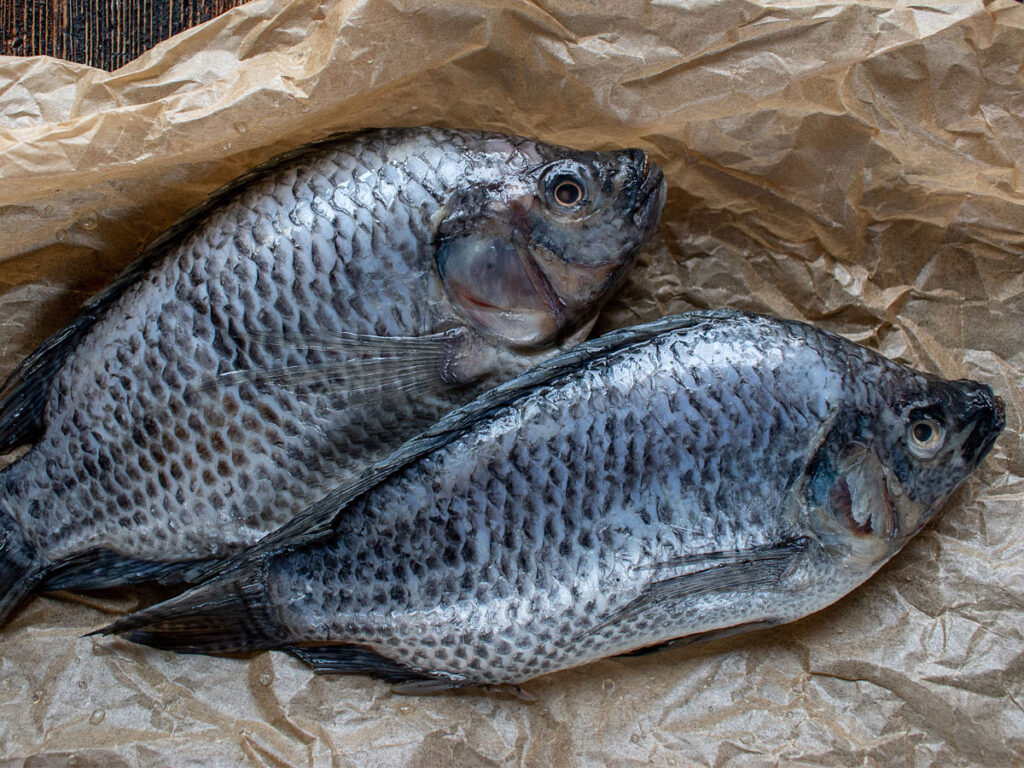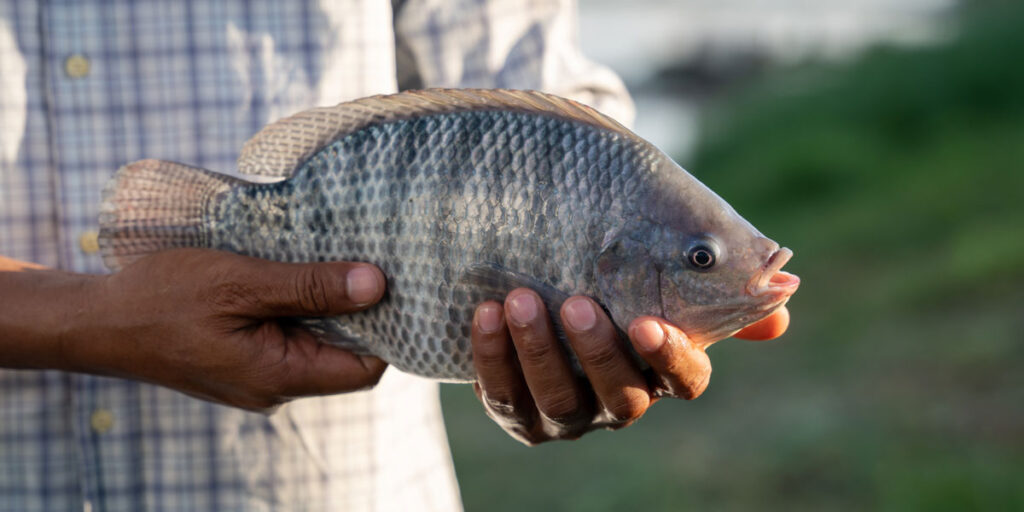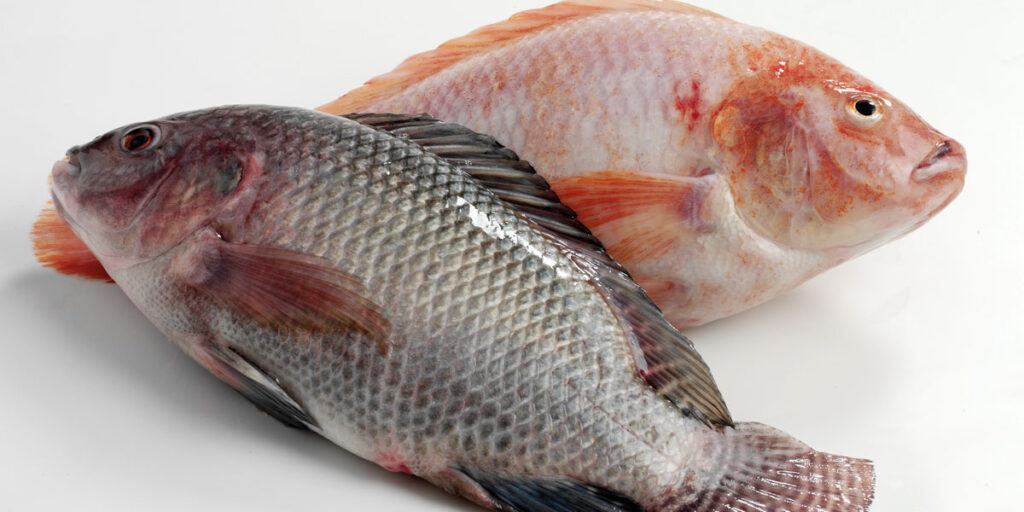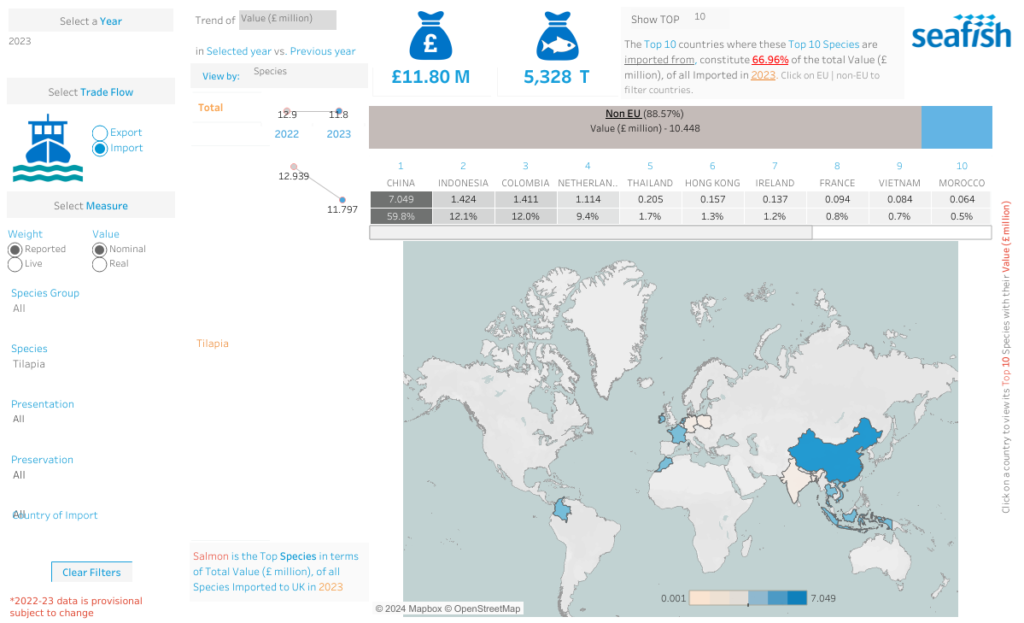
Last updated: 10 May, 2025 @ 12:11
With major tilapia supplier Regal Springs hailing the success of a six-month trial with British pub chain Greene King in using tilapia in its fish and chip meals we take a closer look at the pros and cons of this versatile, yet divisive fish.
Affordable, adaptable, easy to prepare, and somewhat surprisingly tasty, the tilapia can be found in seafood markets, fishmongers and supermarkets the world over.
What is tilapia?
The term ‘tilapia’ is actually used as a catch-all for 112 species of the cichlid family, which come in a range of shapes and sizes.
One of the most common breeds is the Nile tilapia, which accounts for roughly 75% of farmed tilapia.
Whatever your thoughts on tilapia, it’s here to stay. Figures from Seafish, the public body for supporting seafood in the UK, show that more than 120 nations worldwide are involved in tilapia production – with the three largest (as of 2018) being China, Indonesia and Egypt.

Why is tilapia so popular to farm?
From a commercial perspective tilapia is somewhat of a dream species to farm. Being omnivores, the fish isn’t a fussy eater – and will happily thrive on an animal or vegetable-based diet, as well as algae and plankton.
Tilapia also respond well to poor water quality, coping in low-oxygen level water which would kill many other species.
Simply, farming tilapia is affordable and relatively low-maintenance. There’s also a huge demand for the fish globally.
Tilapia – the pros
Tilapia is in a lot of ways an ideal fish for us home cooks. It’s affordable for one, and also very easy to prepare.
There is also no denying that its firm, meaty flesh makes for good eating – and can stand up to a diverse range of cooking methods and styles – as we discovered during a visit to Thailand.
Tilapia is also a good source of protein. Regal Springs says that its tilapia has approximately 20 grams of protein per 100g serving.
They say their fish is also low in calories, fats, and carbohydrates, making it ‘ideal for consumers wanting to eat lighter meals, and seeking to add more fish to their diet’.
The relative ease with which tilapia is farmed and the affordability of the fish to the end consumer also makes tilapia an important food source globally, and one which could help ease pressure on some wild stocks of fish.
Additionally, an increasing number of by-products are being created from farmed tilapia which have been filleted, including belly meat, trimmings, fishmeal, oils, skin for gelatine and collagen production, scales for collagen and pharmaceutical use, and animal feed.

Tilapia – the cons
Bad farming practices are cited as one the biggest concerns when it comes to tilapia – with overcrowded pens, the use of antibiotics, pollution and a higher risk of disease all suggested as contributing factors to poor conditions and a low-quality fish. However, it should be noted that a poorer quality fish will result in a lower price.
A large number of online articles also cite studies like this one where tilapia has been identified as having an imbalance between omega-3 fatty acids and omega-6 fatty acids – which may increase the risk of heart disease and arthritis in humans.
Another consideration when consuming tilapia in the UK is how the fish has arrived into the country.
Tilapia is farmed globally, with fish sometime transported thousands of miles – resulting in a large carbon footprint.
As the below image shows, from the excellent Seafish Trade and Tariff tool, the UK imported more the 5t of tilapia in 2023, at a value of £11.8m.

A whopping 59% of tilapia was imported from China, followed by Indonesia (12.1%) and Colombia (12%).
The small export market for tilapia farmed in the UK shipped 57t in 2023, down from 151t in 2022. Of tilapia farmed in the UK, 30.1% goes to the USA.
Tilapia – a good or bad choice?
Whether tilapia is a good or bad choice is a tricky question to answer.
The fish itself makes for great eating, is both easy to cook and prepare, and perhaps mostly importantly – is affordable for many.
We think, as with all fish, when it comes to deciding if tilapia is a good or bad choice, it’s all down to traceability and responsible sourcing.
Tilapia is farmed in the UK, but what quantity of that fish ends up on the plates of British consumers is unknown.
Additionally, much work is being done to improve working conditions on farms, along with the welfare of farm-bred tilapia, with organisations such as the Aquaculture Stewardship Council (ASC) certifying farms that adhere to its Tilapia Standards.
The ASC certification provides farms with best practice guidelines for a range of areas including biodiversity, feed, pollution, diseases and working environments and conditions.
In terms of supporting and championing British seafood, for us, it’s never going to be better choosing an imported tilapia over a locally-land fish.
However, farmed tilapia is providing a solution when it comes to a reliable and affordable food source, one which may also, ultimately, be of benefit to local, under pressure stocks.
Further reading: Fish Face Seafood Blog in Thailand
Read more about the Fish Face Seafood Blog trip to Thailand, including unveiling the seafood secrets of Railway, Thailand.
Share this Fish Face Seafood Blog article.